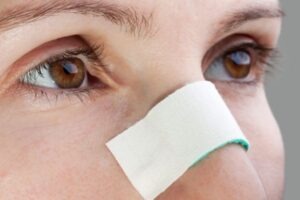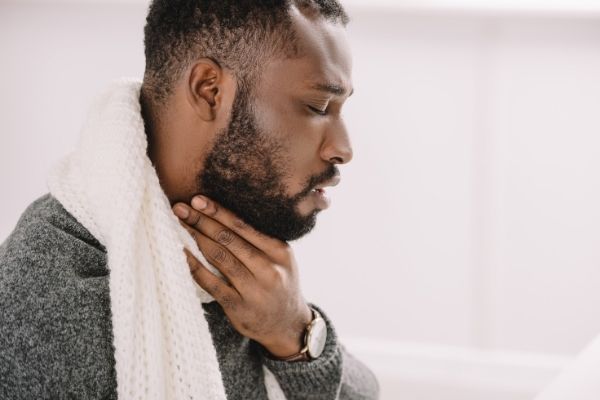It is not unusual to have trouble breathing from time to time because of a clogged nose. However, when this breathing difficulty becomes a daily battle, individuals start looking for solutions to this stressful problem. Fortunately, for many, this situation can be fixed through a procedure known as septoplasty.
Yet, even though this surgery can be life-changing. Many patients often worry about the unpleasant effects that this surgery can result in. Luckily, they do not need to be. Most of these symptoms are not only temporary but should not be a cause of concern. In this blog post, to better help you prepare for what you can expect following a septoplasty. We will detail what symptoms you need to watch out for and whether dry throat issues need to be examined.
What Symptoms Can I Expect Following a Septoplasty?
When your septum is crooked (deviated septum), you can have a hard time breathing through your nose. It can also ultimately increase the risk of sinus infections because of poor drainage. To fix this problem, a septoplasty is usually performed.
A septoplasty is a surgical procedure used to straighten the cartilage and bone, dividing the space between your two nostrils, also known as the septum. Typically, as you undergo a septoplasty, your surgeon will reshape your nasal septum and reposition it to the middle of your nose. Once this procedure is finished and healed, many patients find they are able to breathe better. However, no procedure is without some risk, and following a septoplasty, a patient may experience the following symptoms:
- Bleeding for the first 24 hours after the surgery.
- Swelling in the nose and around the cheeks and eyes. This swelling will maximize after about two days following the surgery and then subsides over the next five to six days.
- Pinkish-reddish discharge from the throat and the nose, which will gradually decrease with time. However, if at any point, you experience extreme nasal bleeding. You need to make sure to lie down and keep your head elevated. Apply an iced washcloth to the back of your neck and over your eyes. If the bleeding continues, make sure to call your doctor.
- Typically, most patients have more discomfort from their sinus and nasal congestion than actual pain. Yet, if you do experience any pain, make sure to take the pain medication prescribed by your doctor.
- Even though infections are unusual following a septoplasty, you still need to be on the watch for them. If at any point you experience increased redness, swelling, pain, and have a fever over 102 degrees Fahrenheit, make sure you contact your doctor.
- Keep the area clean following the surgery with a Q-tip moistened with hydrogen peroxide. However, only clean around the nostrils and not inside them.
- Headaches and ear discomfort are normal and can be taken care of with pain medication.
Why Do I Have a Dry Throat After a Septoplasty Procedure?
There are numerous reasons why you may experience dry throat following a septoplasty. In many instances, a doctor will need to place splints in your nose following the procedure, which will result in congestion and breathing through your mouth for a few days. Typically, this mouth breathing will dry out not only your mouth and throat but your teeth as well.
In addition, it is quite common to experience a dry throat after a septoplasty due to the specific medications you are required to take. Many times these medications may create a dry, parched feeling in your mouth that many people refer to as “dry mouth.” This is because these medications tend to block certain functions of your body’s systems that help promote watery secretions from the glands, such as saliva.
Finally, in some rare instances, you may also get a dry throat from the tube placed in your throat during anesthesia. Sometimes this tube can result in some irritation, which can cause a sore throat or discomfort, which may feel like a dry throat. If this issue lasts longer than a few days, contact your doctor as they may want to monitor you further.
How To Get Rid of That Dry Throat Feeling
As you can see, a dry throat is relatively common following a septoplasty and many times not a cause of concern. However, this does not mean you have to endure this feeling for extended periods of time. If you find that you have a dry throat following your procedure, dry to incorporate the following tips into your daily routine:
- Drink lots of fluids and make sure to sip these fluids throughout the day
- Gargle your throat with a mixture of warm water and 1/2 teaspoon of salt a few times a day
- Try to limit your caffeine intake as caffeine can make mouths drier
- Avoid using mouthwashes that contain alcohol as these can be overly drying
- Try getting a mouthwash designed for dry mouth, which can take care of your dry mouth and also protect your teeth against decay
- Do not use any tobacco products such as chewing tobacco or cigarettes
- Consider using over-the-counter saliva substitutes, such as mouth sprays or rinses
- Use over-the-counter Cepacol lozenges to help with any irritation in the mouth and throat
- Add a room humidifier, which can add moisture into the air at night and help with your dry mouth.
Do Not Let Dry Throat Issues Take Over- Reach Out To Dr. Alen Cohen
For many, the tips mentioned above can take care of most dry mouth issues. However, if these dry mouth symptoms continue to cause you problems, do not hesitate to contact Dr. Alen Cohen at The Southern California Sinus Institute, a nationally recognized sinus center of excellence. The Southern California Sinus Institute specializes in surgical and medical treatments of patients with all sinus and nasal disorders and can provide you the answers you need and the information you want about your septoplasty procedure or any of the symptoms and issues that can result from the surgery.

